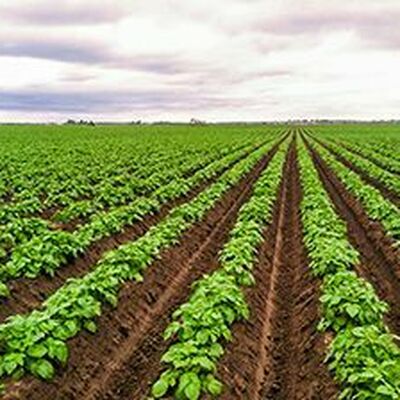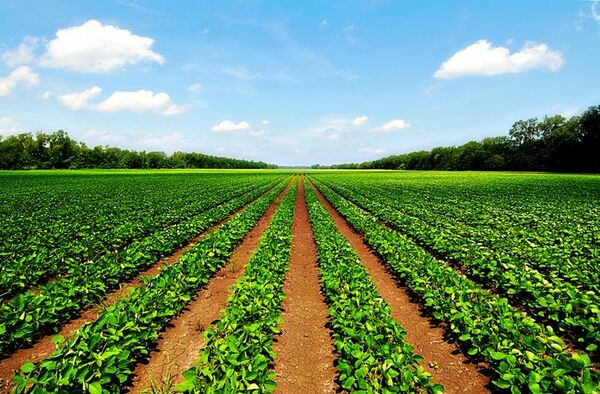Notifications
ALL BUSINESS
COMIDA
DIRECTORIES
ENTERTAINMENT
FINER THINGS
HEALTH
MARKETPLACE
MEMBER's ONLY
MONEY MATTER$
MOTIVATIONAL
NEWS & WEATHER
TECHNOLOGIA
TV NETWORKS
VIDEOS
VOTE USA 2026/2028
INVESTOR RELATIONS
COMING 2026 / 2027
ALL BUSINESS
COMIDA
DIRECTORIES
ENTERTAINMENT
FINER THINGS
HEALTH
MARKETPLACE
MEMBER's ONLY
MONEY MATTER$
MOTIVATIONAL
NEWS & WEATHER
TECHNOLOGIA
TV NETWORKS
VIDEOS
VOTE USA 2026/2028
INVESTOR RELATIONS
COMING 2026 / 2027
About Me
 Rahul Doshi
Rahul Doshi I am an agritech blogger passionate about bridging the gap between traditional farming and modern agricultural innovation. With a background in sustainable agriculture and digital technology, I focus on exploring smart farming solutions, emerging agri-inputs, and the transformative role of e-commerce in rural economies.
 Rahul Doshi -
Apr 9 -
Technology -
Farmer app
khedut
Online agri Shopping
Agricultural News & Updates
-
156 views -
0 Comments -
0 Likes -
0 Reviews
Rahul Doshi -
Apr 9 -
Technology -
Farmer app
khedut
Online agri Shopping
Agricultural News & Updates
-
156 views -
0 Comments -
0 Likes -
0 Reviews

Precision farming has redefined how modern agriculture operates, ushering in a new era of productivity, sustainability, and data-driven decisions. But amidst all the technology—from sensors to satellite mapping—one unsung hero plays a crucial role in enhancing crop protection and nutrient delivery: the high-performance sticking/wetting agent. It’s not just a farm input; it’s a fine-tuning tool for anyone serious about maximizing agricultural efficiency.
Whether you are a large-scale agribusiness owner or a small-scale farmer looking to get ahead, understanding the role of sticking and wetting agents can give your farming strategy the sharp edge it needs. With the rise of farmer-friendly tools like the Agribegri app, accessibility to quality inputs like these agents has become more streamlined than ever, making it easier to integrate them into your regular practices.
 Understanding the Science of Sticking/Wetting Agents
Understanding the Science of Sticking/Wetting AgentsAt its core, a sticking/wetting agent is a surfactant—a substance that reduces the surface tension of a liquid, enabling it to spread more easily and adhere better to surfaces like plant leaves. These agents are particularly useful when applying pesticides, herbicides, fungicides, or foliar fertilizers.
Sticking agents ensure that the sprayed substance remains on the leaf surface without washing off during rain or irrigation.
Wetting agents help the liquid penetrate waxy or hairy surfaces of plants, ensuring better coverage and absorption.
Together, they form a synergy that improves the effectiveness of agrochemical sprays, reducing wastage and increasing the efficacy of treatments.
Sticking/wetting agents are most commonly used in:
Crop protection: Enhancing the effectiveness of pesticides, fungicides, and herbicides.
Foliar feeding: Assisting nutrient absorption during foliar fertilizer applications.
Horticulture and greenhouse farming: Where precision and cost-effectiveness are paramount.
To use them, these agents are typically mixed in small quantities—often 0.1% to 0.3% of the total spray solution. For instance, if you're preparing 100 liters of spray, you may only need 100–300 ml of the agent. Their exact proportion varies depending on the crop type, the spraying purpose, and the other chemicals involved.
Most of these agents are derived from non-ionic or organic compounds, which make them safer for both the plant and the environment. However, choosing a reputable product is key, as low-quality versions can harm plant surfaces or interfere with the effectiveness of the chemicals.
Precision farming is all about doing more with less, and that's exactly what a high-performance sticking/wetting agent offers.
Better Coverage: Ensures uniform coating of sprays on plant surfaces, which leads to more consistent results.
Weather Resistance: Especially sticking agents, which make sure your costly applications don't get washed away by unexpected rains.
Cost Efficiency: With better adherence and penetration, farmers use fewer chemicals over time.
Enhanced Absorption: Leads to quicker and more effective pest and disease control.
But like every powerful tool, it has its caveats.
While these agents are incredibly effective, overuse or inappropriate mixing can lead to:
Phytotoxicity: When applied in excess or with incompatible chemicals, they may cause plant damage.
Reduced Spray Volume: Some farmers may incorrectly reduce the spray volume too much, thinking the agent will compensate entirely.
Environmental Sensitivity: Although many are eco-friendly, some synthetic types may linger in the environment longer than desired.
Farmers should always consult product labels and, when in doubt, reach out to agri-support platforms or their local agriculture department.
With the rapid digitization of agriculture, farmer apps have become vital tools for modern cultivators. These apps empower users to access verified agri-inputs, product comparisons, weather insights, and crop management tips—all from their smartphones. For the average khedut, this digital shift means faster decision-making and better-informed purchases, especially when it comes to crucial products like sticking/wetting agents. Seamless online agri shopping experiences now allow farmers to bypass traditional bottlenecks, ensuring timely access to quality products at transparent prices.
Such apps often come bundled with services like agricultural news & updates, weather predictions, and digital guides—making them indispensable tools for the modern “khedut,” the Gujarati term for farmer. What once required multiple trips and expert consultations is now a tap away.
"A wise farmer cultivates not just the soil, but also knowledge—because good harvests start with informed decisions."
High-performance sticking/wetting agents are often created using non-ionic surfactants like organosilicones, alcohol ethoxylates, or naturally derived substances such as saponins from plants. Some high-end variants may even include a blend of film-forming agents and penetrants to ensure deeper, longer-lasting action.
This is where unique compounds such as trisiloxane ethoxylate come into play. These help break water droplets into smaller units, increasing spreadability by up to 200% compared to regular water alone. Their production involves a delicate balance of chemical reactions, emulsification, and pH adjustments to ensure they are both effective and safe for plants.
As more farmers turn to precision-based agriculture, the demand for reliable and innovative inputs grows. Here are some lesser-known yet significant insights:
A study by the Indian Agricultural Research Institute showed that adding wetting agents to foliar applications improved nutrient uptake by 15–22%.
Some agents also have anti-drift properties, reducing the chances of chemicals being carried away by wind.
Application using a low-volume sprayer combined with a high-performance sticking/wetting agent can reduce chemical use by nearly 30%, without compromising on effect.
Such statistics are compelling, especially for those who are trying to balance profitability with sustainability.
The online agri shopping landscape is booming, offering farmers the chance to compare products, read reviews, and access promotions that weren’t available through traditional retail channels. This is especially crucial for time-sensitive products like sticking/wetting agents, which may be needed right before an expected rainfall or pest outbreak.
Farmers who stay updated through agricultural news & updates platforms are often the first to learn about new formulations, recommended combinations, and product bans or recalls. This awareness helps them make better-informed decisions.
